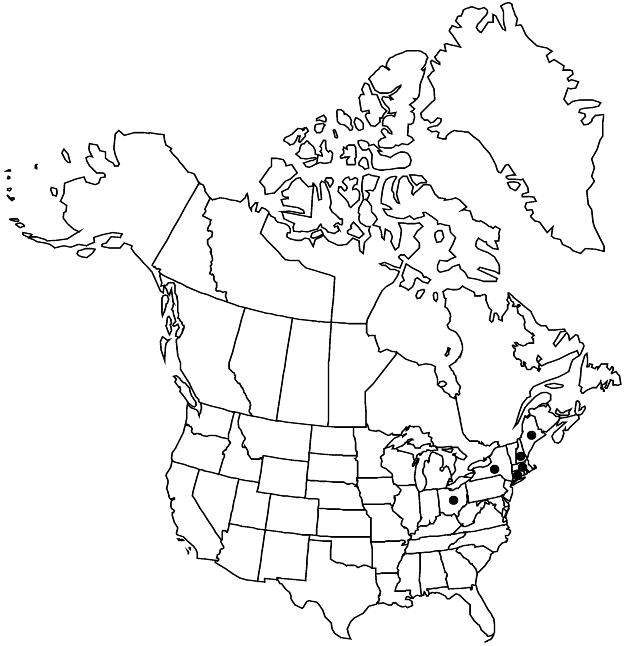Silene viscaria subsp. viscaria
Plants perennial; taproot stout, branched; caudex compact, multicapitate. Stems erect, simple proximal to inflorescence, 30–90 cm, glabrous, viscid, especially at nodes. Leaves: basal numerous, tufted, petiolate, blade oblanceolate to linear-oblanceolate, 4–15 cm × 2–10 mm (including petiole), apex acute, glabrous, ciliate at base; cauline in 2–4 pairs, connate proximally, sessile. reduced distally, blade linear-lanceolate, 2–10 cm × 2–8 mm, apex acute, glabrous, ciliate at base. Inflorescences paniculate, consisting of short, interrupted cymes, narrow, bracteate, bracteolate; cyme 3–10-flowered, proximal ones pedunculate; peduncle to 3 cm; bracts leaflike, to 3 cm; bracteoles broadly lanceolate, 3–10 mm, margins membranous, apex acuminate. Pedicels shorter than calyx, glabrous but viscid. Flowers 14–22 mm diam.; calyx purple, obscurely veined, narrowly campanulate in flower, 6–10 × 3–4 mm, clavate in fruit, 10–15 × ca. 5 mm, papery, puberulent, lobes ovate, ca. 1.5 cm, margins narrow, membranous, apex obtuse; corolla purple or dark-pink (rarely white), ca. 11/2–2 times calyx, clawed, claw equaling calyx, limb spreading, obovate, entire or slightly notched, 5–9 mm, appendages 2, oblong, 3 mm; stamens shortly exserted; stigmas 5, shortly exserted. Capsules ovoid, equaling calyx, opening by 5 teeth; carpophore 3–5 mm. Seeds dark-brown, reniform, 0.3–0.5 mm, finely tuberculate. 2n = 24 (Europe).
Phenology: Flowering early summer.
Habitat: Roadsides, waste ground, fields
Elevation: 0-500 m
Distribution

Introduced; Conn., Maine, Mass., N.H., N.Y., Ohio, Europe
Discussion
Subspecies viscaria is an attractive garden plant similar to S. suecica but somewhat larger and sturdier with viscid pedicels. It occasionally escapes but does not persist.
Selected References
None.